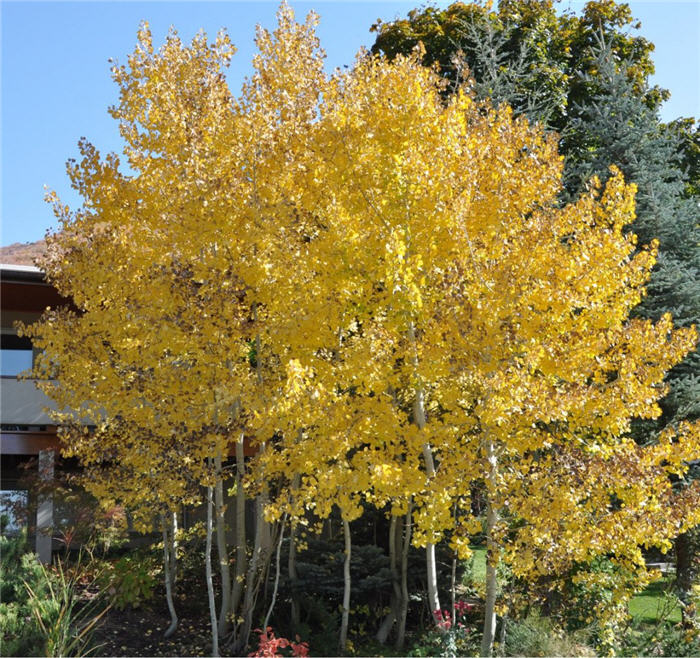| Botanical Name: Populus tremuloides | |
| Common Name: Quaking Aspen |

-
Anatomy
-
Culture
-
Design
Plant Type
Tree
Height Range
25-40', 40-60'
Flower Color
n/a
Flower Season
Spring
Leaf Color
Green
Bark Color
White
Fruit Color
n/a
Fruit Season
n/a
Sun
Full, Half
Water
Medium, High, Extra in Summer
Growth Rate
Fast
Soil Type
Clay, Loam, Rocky
Soil Condition
Average, Rich, Well-drained, Moist
Soil pH
Neutral
Adverse Factors
Invasive
Design Styles
Meadow, Ranch, Native Garden, Woodland
Accenting Features
Fall Color, Multi-trunk Tree
Seasonal Interest
Winter, Summer, Fall
Location Uses
Background
Special Uses
Shade Tree, Naturalizing
Attracts Wildlife
n/a
Information by: Stephanie Duer
Photographer:
Photographer:
-
Description
-
Notes
Though iconic to the Rocky Mountains, Aspen aren't well suited to our urban and valley landscapes. They resent the summer heat and the lack of snow, and as such are prone to a host of disease and pest issues. And if that's not enough, their tendency to sucker can create a maintenance nightmare. Consider instead Serviceberry or Manchurian Ash for a similar appearance.
Best suited to growing in the higher evelations of the East Benches and Canyon locations. Grow in full sun to part shade in well drained, loamy soil. Though native, aspen are not drought tolerant, and require regular irregation when planted in the lower elevations of the Salt Lake Valley.